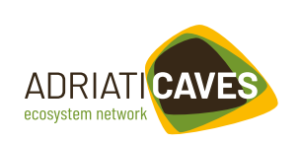The beauty of cave depths is fascinating to both amateurs and professionals. To an avid explorer, the most beautiful caves are the deepest, longest, and the most demanding to conquer, whereas those who love photography and underground scenery at glance are more interested in caves that are rich from a speleological point of view and represent must-see places within destinations.
Speleology and tourism have interacted in science and society for a very long time. In many countries, tourist caves shape the economic conditions at the local and regional level, as they represent places that must be visited while in the destination. This shows the value caves have in the development of both local communities and scientific research. Caves are indicative of the development of speleotourism, and they are one of the main geo-sites for geo-tourism travel.
Caves have been the source of inspiration and awe to humans for centuries, and today is no different.
With spectacular natural formations, colors, and patterns, cave explorers are transported into a magical underground world for unforgettable experiences. Caves can be found all over the world whether they be stone caves, ice caves, solution caves, each with a unique set of characteristics. Apart from their stunning beauty, caves are characterized by historical and cultural heritage. Untouched remains of early humans and animals which utilized caves as shelter tell modern historians and archaeologists a detailed story. Prehistoric cave art gives us a glimpse into human life millennia ago. Other uses of caves have included refuge, storage, extraction of resources, and religious observation. Recent discoveries and technologies have made these hidden gems increasingly accessible to adventure seekers all over the world. Visitors can hike along paths, crawl through tunnels and chambers, or spelunk into openings.
No matter how experienced or inexperienced someone may be, there are breathtaking caves all over the world that provide adventure seekers with the opportunity to partake in some of the world’s most beautiful experiences.
Transforming speleological objects into show caves has brought numerous positive results for many regions in the world, including Montenegro. Active cave tourism of researched geo-sites can significantly influence both local and regional economic growth, as well as the concept of sustainability of the cave environment and its ecosystem, education, and responsibility.
Lipa cave is situated in Lipa Dobrska village within the territory of the Old Royal Capital of Montenegro and is the first valorized speleological object in Montenegro open for visits. With its five year experience in show cave management, TC Lipa cave is focused on knowledge sharing, sustainable tourism development, and service improvement. The company places its efforts towards the development of innovative projects in the area of tourism and sustainable valorization of natural and cultural resources. The management is devoted to creating a sustainable tourist attraction, and in this short period has contributed to the development of tourism in the local area. The project financed through ADRION is already being put in place and it focuses on sustainable management of show caves and their utilization for overcoming the seasonality of tourism flows throughout the country. Lipa cave, being the first and still the only cave adventure in Montenegro, with a gorgeous 2.5 km long system of passages and halls, represents one of the most significant tourist attractions in Montenegro offering a unique experience to its visitors.
Caves are amazing wonders of nature to behold, whether you’re in the deepest cave in the world or the one with the most stalactites, one gains a sense of awe when touring them. A cave’s beauty isn’t tied to its size– Some of the most beautiful caves in the world and top places to visit are nowhere near to being the largest. One doesn’t need to be proficient in speleology to enjoy the spectacular beauty of the underground world.
Tourism is an activity based on environmental principles, and as such the way towards protecting it and its resources is sustainable development. The exploitation of speleological potential to develop speleological tourism in the world could be a viable variant that requires planning and setting up an adequate strategy. Together with our Adriaticaves – Adrion partners we conducted an analysis of tourism in caves and it is very interesting to see how speleological tourism is developing in the world. Detailed analysis can be found here.



